Garden Species List: Part 6 - Spiders and Wasps
hive-127788·@dannewton·
0.000 HBDGarden Species List: Part 6 - Spiders and Wasps
I recently shared a post about a [Garden Safari](https://peakd.com/hive-127788/@dannewton/garden-safari) that I went on, at some point last week. I spoke about the joys of sitting in the sun watching the wildlife around me, but the exciting part was how I found a new species of Hoverfly that I had not seen in the garden before. It was really cool to see, and takes the Species Count of the Garden up to an amazing **849** species. 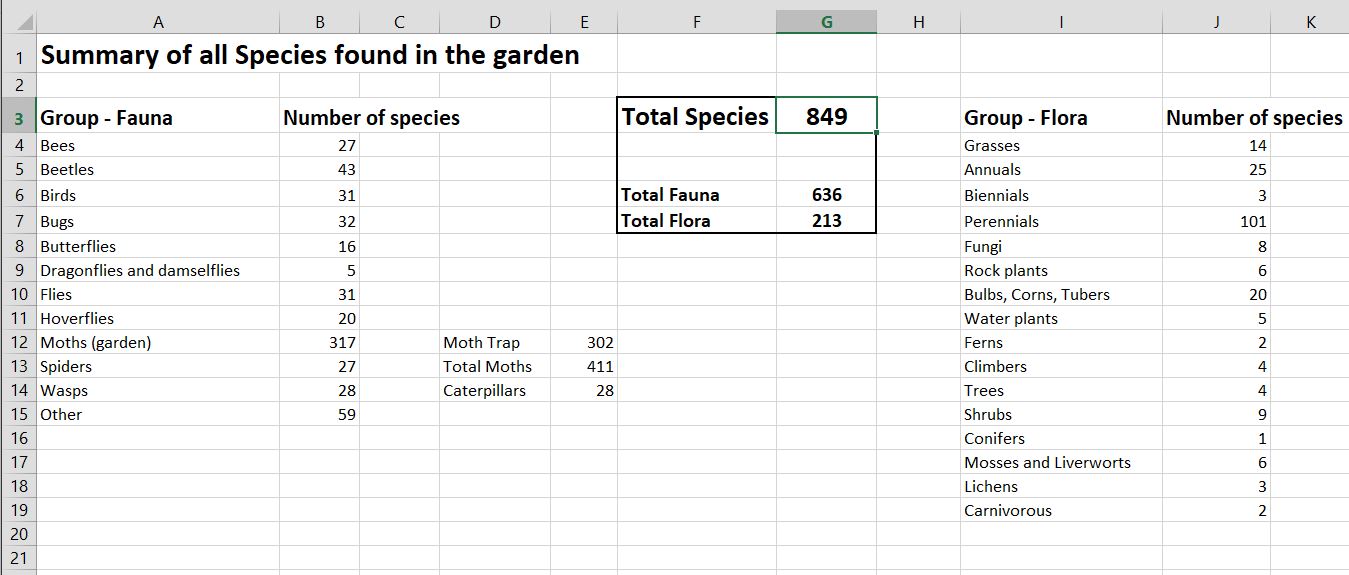 I have written about creating a [List of Species](https://peakd.com/hive-127788/@dannewton/a-garden-of-secrets-recording-wildlife-at-home) in a previous post, but I thought it would be worth the effort to go through it properly and show just how much variety of invertebrates and birds and plants and all sorts of other animals there are to see in the garden. A few points before we begin: - I only include species to the list that I am sure of (or had verification from an expert) - Not all 800 odd species are present in the garden at any one time (obviously) The vast majority are only present for a short amount of time, or even just briefly passing through the area. - My work (project, hobby, whatever you want to call it) is inspired by a book written by Jennifer Owen [Wildlife of a Garden: A Thirty Year Study](https://www.amazon.co.uk/Wildlife-Garden-Thirty-year-Jennifer-Owen/dp/1907057129). The book tells how she spent all her spare time in her garden documenting everything she could see. [Part 1 - Bees and Beetles](https://peakd.com/hive-127788/@dannewton/garden-species-list-part-1-bees-and-beetles) [Part 2 - Birds and Bugs](https://peakd.com/hive-127788/@dannewton/garden-species-list-part-2-birds-and-bugs) [Part 3 - Butterflies and Dragonflies](https://peakd.com/hive-127788/@dannewton/garden-species-list-part-3-butterflies-and-dragonflies) [Part 4 - Hoverflies (and other Fly species) ](https://peakd.com/hive-127788/@dannewton/garden-species-list-part-4-hoverflies-and-other-fly-species) [Part 5 - Moths](https://peakd.com/hive-127788/@dannewton/garden-species-list-part-5-moths-lots-and-lots-of-moths) Introduction done: lets get to it!  **Spider (Araneae) - 27 species** For this part of the article we are going to look at two groups of invertebrates which are often mis-understood, and hated by many people. It is a shame really as they are both fascinating groups, with a variety of different lifestyle and lifecycles. They also very important in maintaining balance in the ecosystem. They predate on lots of different species, and provide a food source for many others. *I strongly believe that if you proclaim to say that you love wildlife, and love nature, then you have to love these as well. You are not allowed to cherry-pick the cute and fluffy bits... you should be appreciating ALL creatures great and small.* Are we all on the same page? Good. (I'll get of my soapbox now) 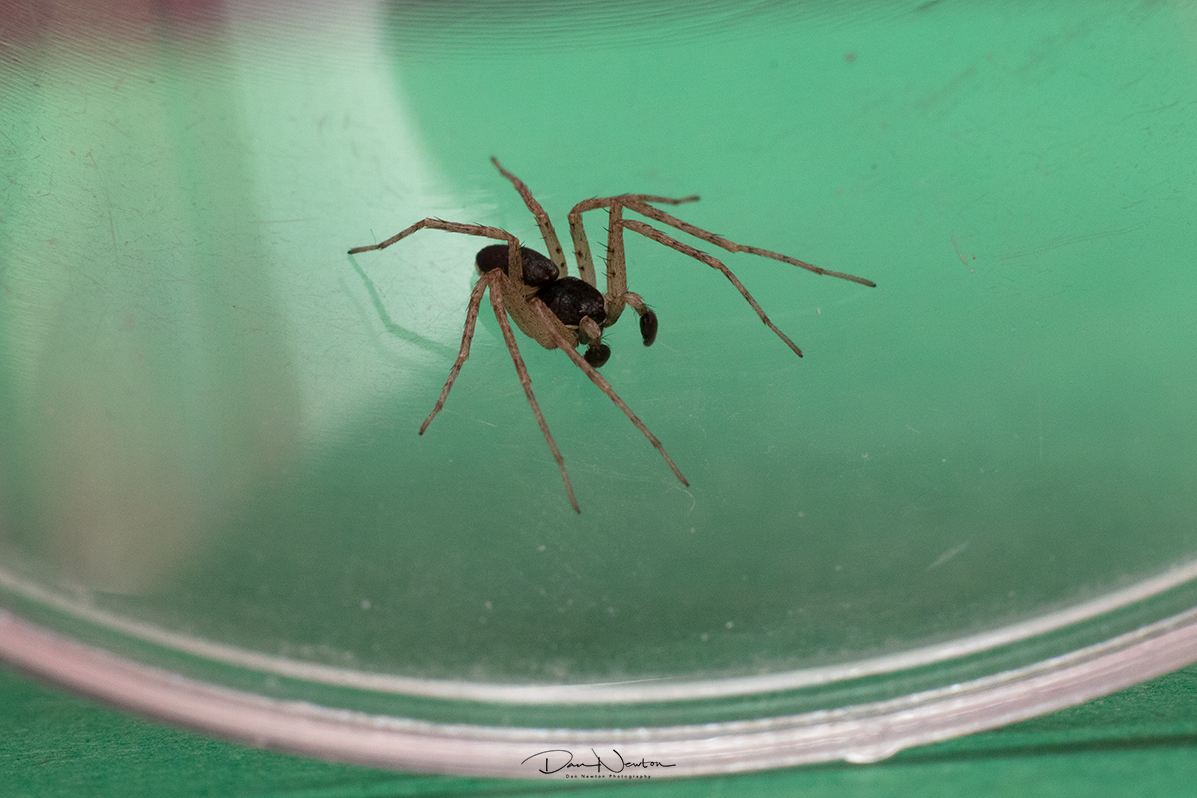 Running Crab Spider - *Philodromus dispar* We often associate Spiders with webs, but there are a surprising amount of species that don't use webs. This *Philodromus dispar* is one example. It is referred to as a Running Crab Spider, because it chases after its prey. I often see these scurrying up and down the walls outside the back door and they are pretty quick! 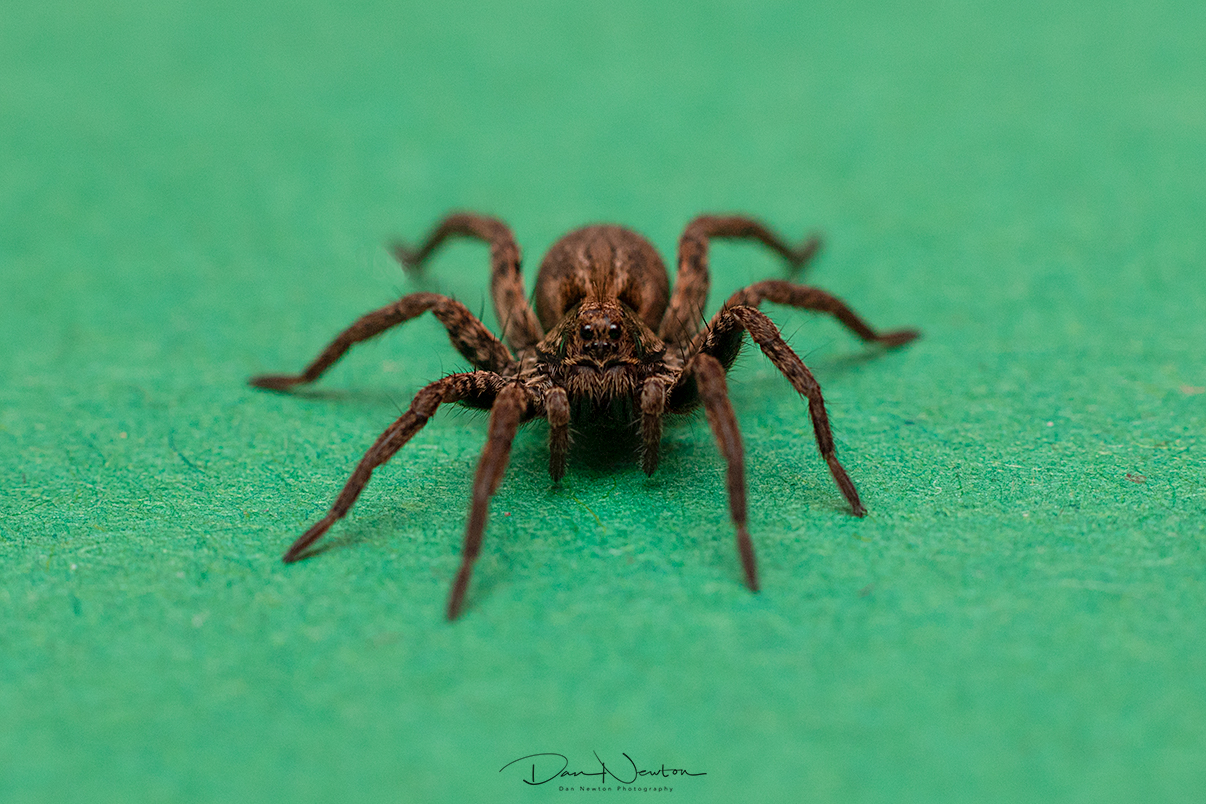 Wolf Spider - *Alopecosa sp* There are a number of different species of Wolf Spider (many are very similar and hard to tell apart. The name 'Wolf' refers to the fact that it is another Hunter, choosing to chase after its prey. It does still use a web. All female Wolf spider species use it to bind together the eggs that have been laid. She will then carry it around behind her, so she can protect it. Most Spiders in general are attentive mothers, who at least look after the eggs until the spiderlings have hatched. Many will look after and protect them during the first few weeks after hatching as well. This is certainly better than many species of insects who lay eggs on a bit of leaf or plant stem, and then abandon them. Impressed? You totally should be be because Spiders are amazing! 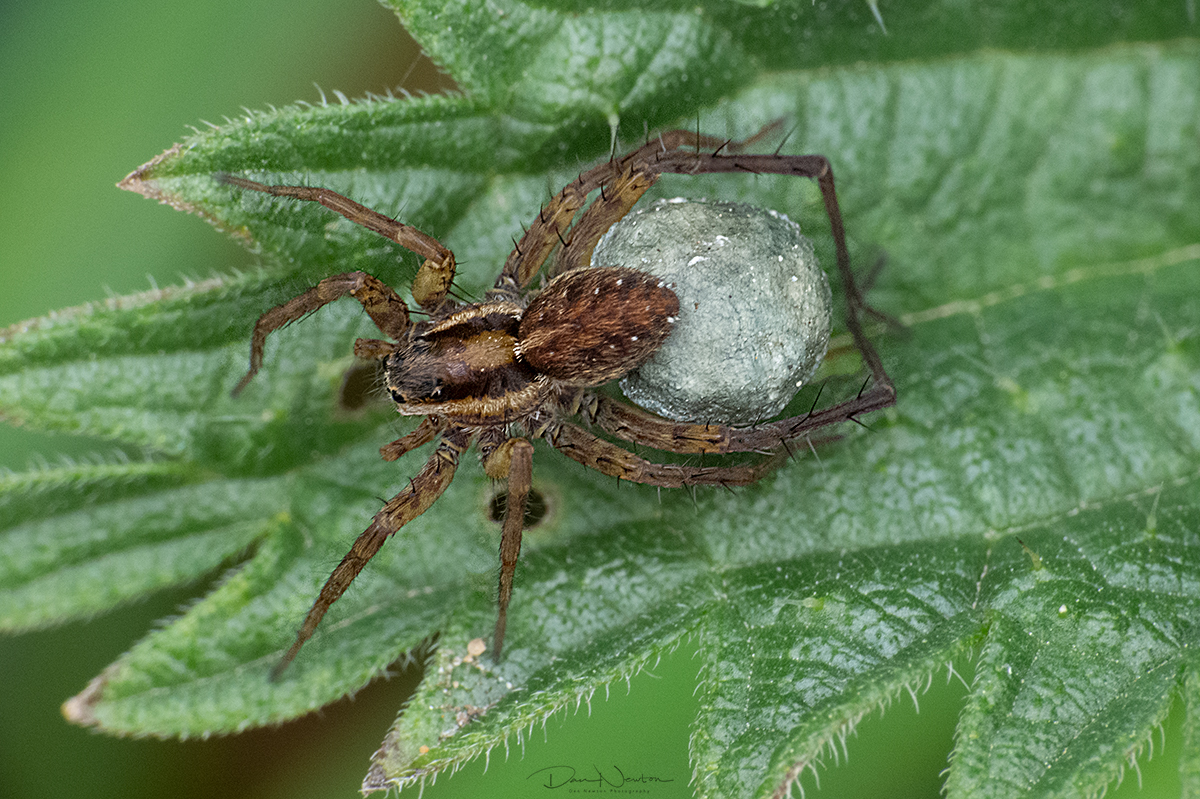 Female Wolf Spider protecting her Egg sac. 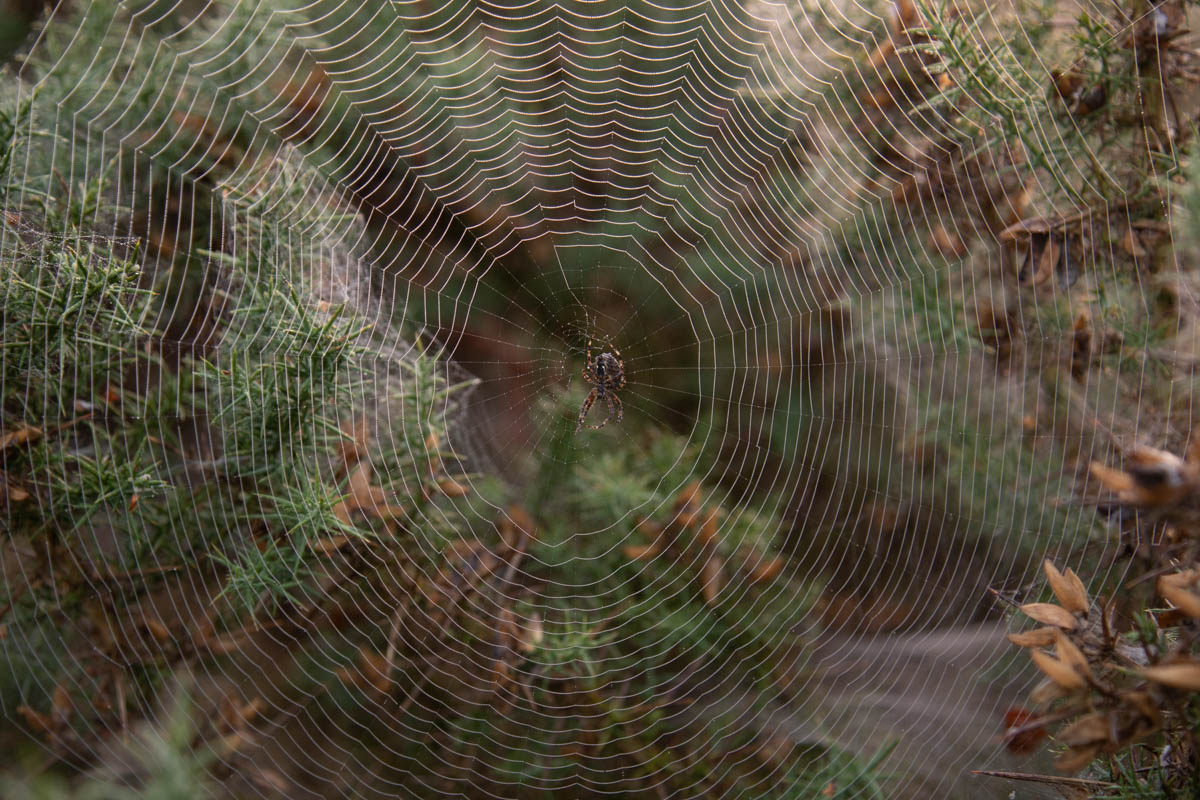 Garden Orb Weaver - *Araneus diadematus* And now I'll show you a 'classic' spider on its web. This image wasn't taken in the Garden, but we see plenty of these Garden Orb-weavers here. They are very common in early Autumn, and I love looking closely at these webs. They are engineering marvels, and not just very effective at catching food, but they are beautiful to look at as well. 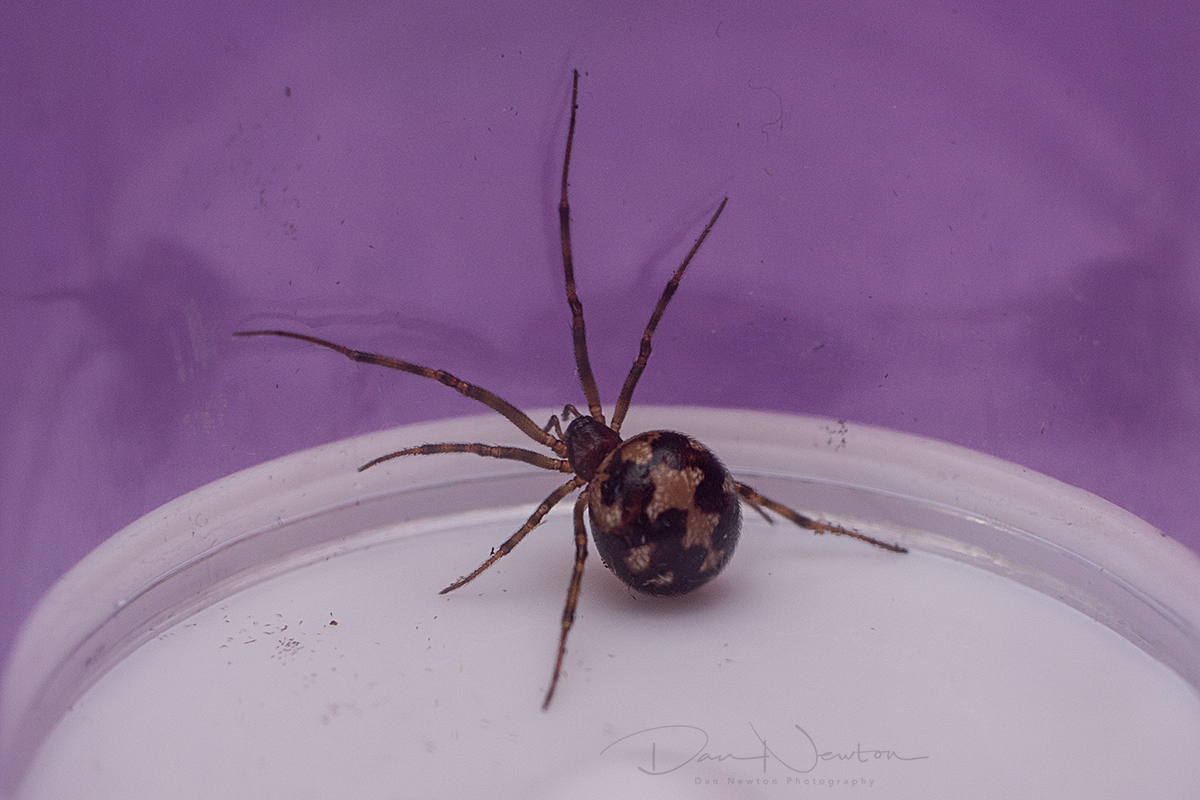 *Steatoda triangularis* And I'll finish this section by mentioning this species again. I wrote about it in [this post](https://peakd.com/hive-127788/@dannewton/just-another-spider-species-seen-in-the-garden) a few months ago. It is the rarest species I have seen here in the garden, and officially only the 5th UK record. It was an amazing day when I found that out, and its one of the reason I record everything I see, for the potential chance to find something really rare! 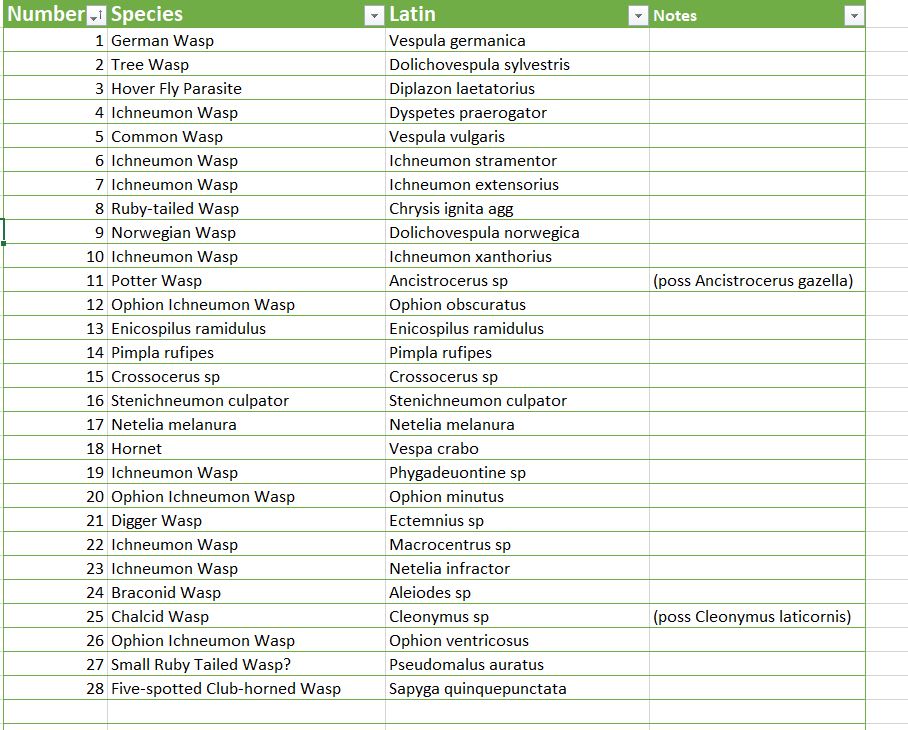 **Wasps (Apocrita) - 28 species** And now we move onto Wasps. These are also amazing creatures, and definitely mis-understood. Most people will assume all wasps are similar to the Common Wasp featured below, but instead there are over 6000 species in just the UK alone. A few species are social (with queens living in a nest), but the vast majority are solitary. 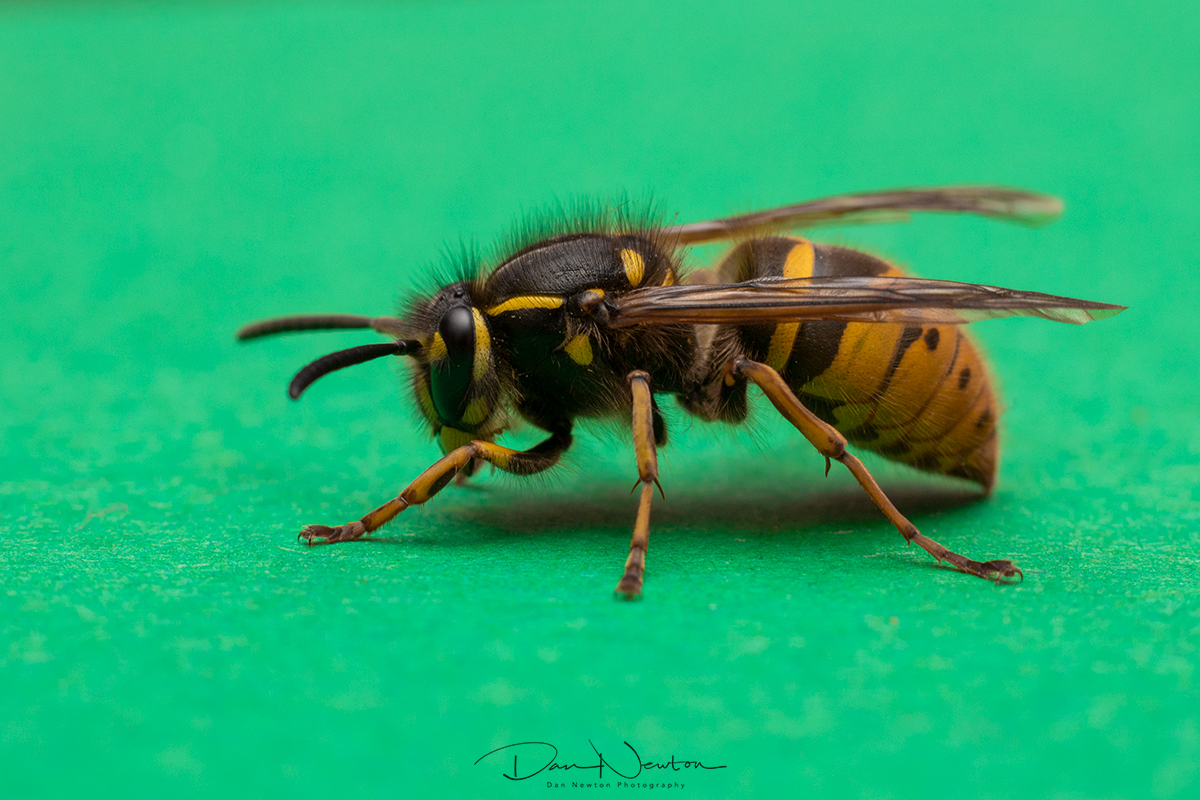 Common Wasp - *Vespula vulgaris* I might as well begin here. This is the Common Wasp and here in the UK it is the standard 'picnic-ruiner' in late Summer. It often gets a bad press, but they are merely very efficient. They are similar to Bees (they are both part of the Hymnepotera Order) but whereas Bees are vegetarian feeding on pollen, Wasps are carnivores. When the nest is active the worker wasps are busy searching for flies, bugs, small caterpillars and other sources of meat to take back to the nest to feed to the young. So when she (workers are all female) spots your Ham sandwich, all she sees is a very convenient food source. She doesn't care about us Humans, so we shouldn't take it personally. We certainly shouldn't label them as 'evil'. Hate is a human construct. Nothing else in nature Hates like we do, they either eat or get eaten. *Sorry, I climbed back on top of my soapbox... lets move on shall we?* 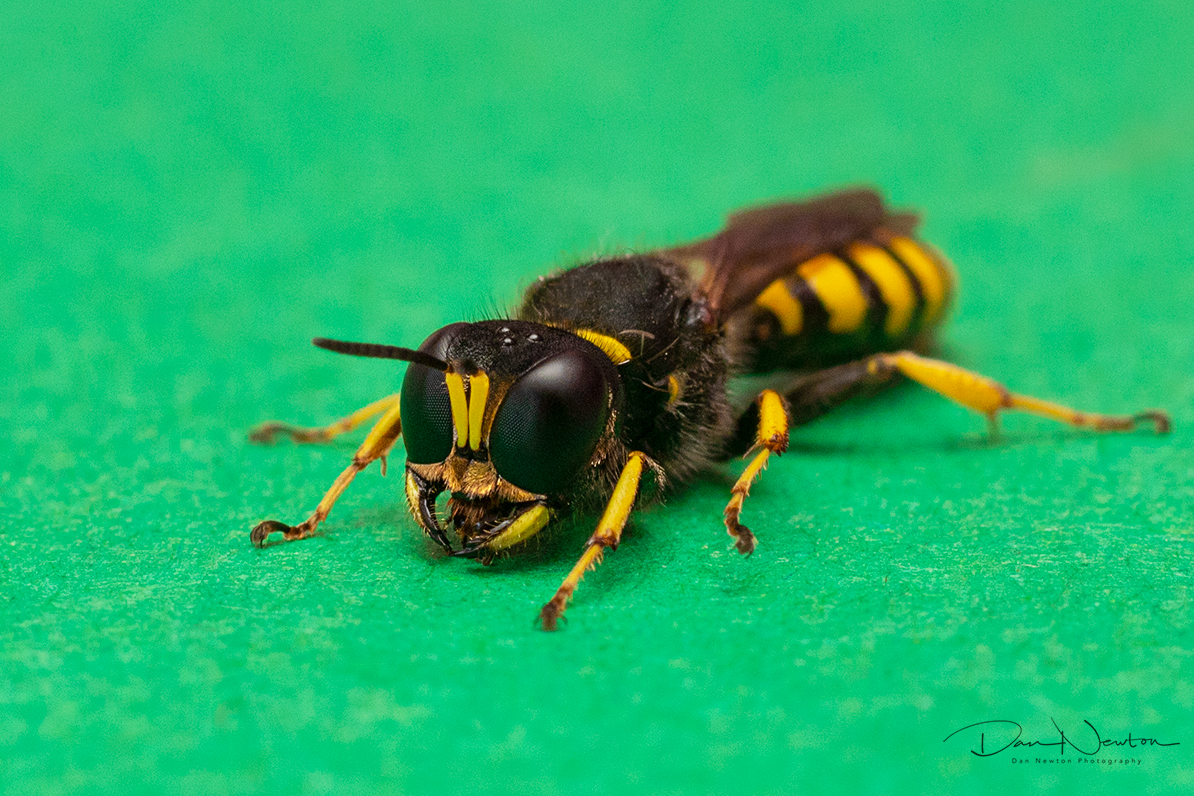 Digger Wasp - *Ectemnius sp* Although this Digger Wasp looks similar to the previous Common Wasp, it has a very different lifestyle. It is Solitary, which means each female looks after its own nest. It still finds its own food (caterpillars etc) which it will take to its burrow to feed the next generation. 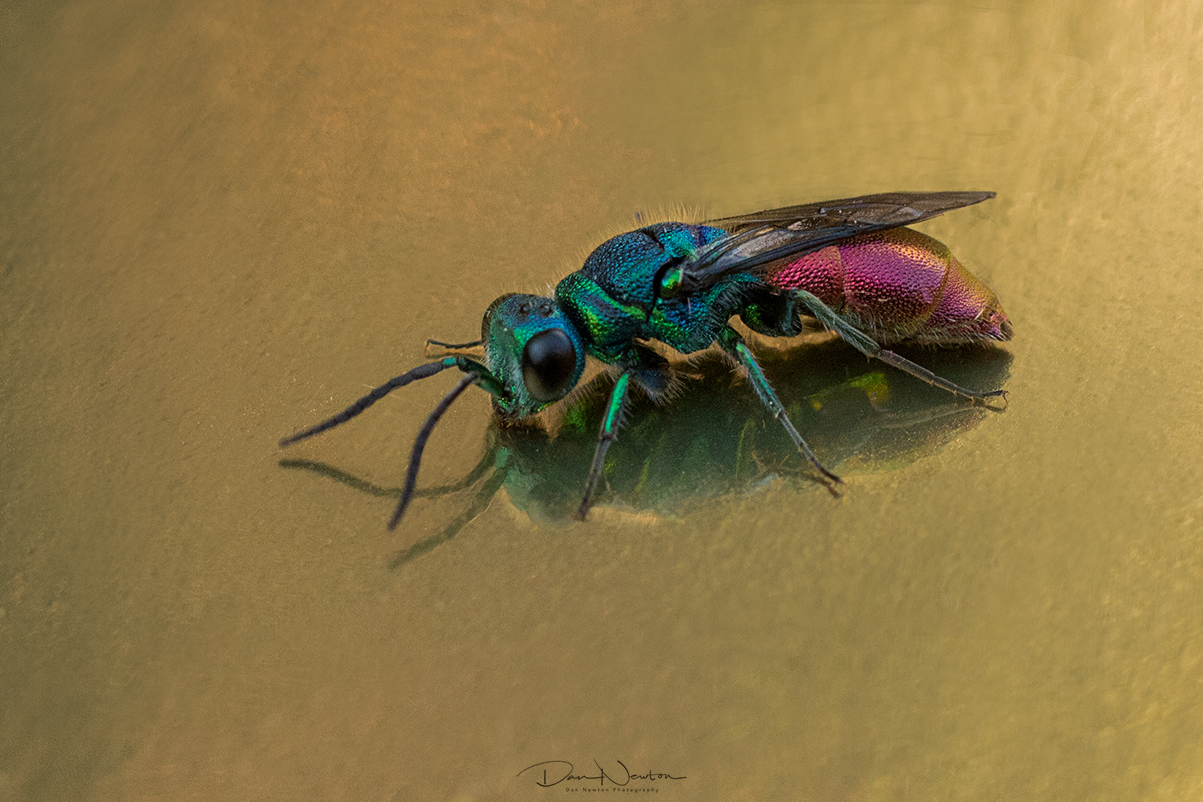 Ruby-tailed Wasp - *Chrysis sp* This extravagantly marked Wasp is a Ruby-tailed Wasp (sometimes called a Jewel Wasp). These are beautiful looking insects, but they hiding some unpleasant behaviour. These are *cleptoparasites*. This means they seek out the nests of solitary bees (such as Osmia Bicornis) and lay their eggs in those nests. The young of the Ruby-tailed Wasp then emerge and eat the Bee larvae and then the rest of the food source. 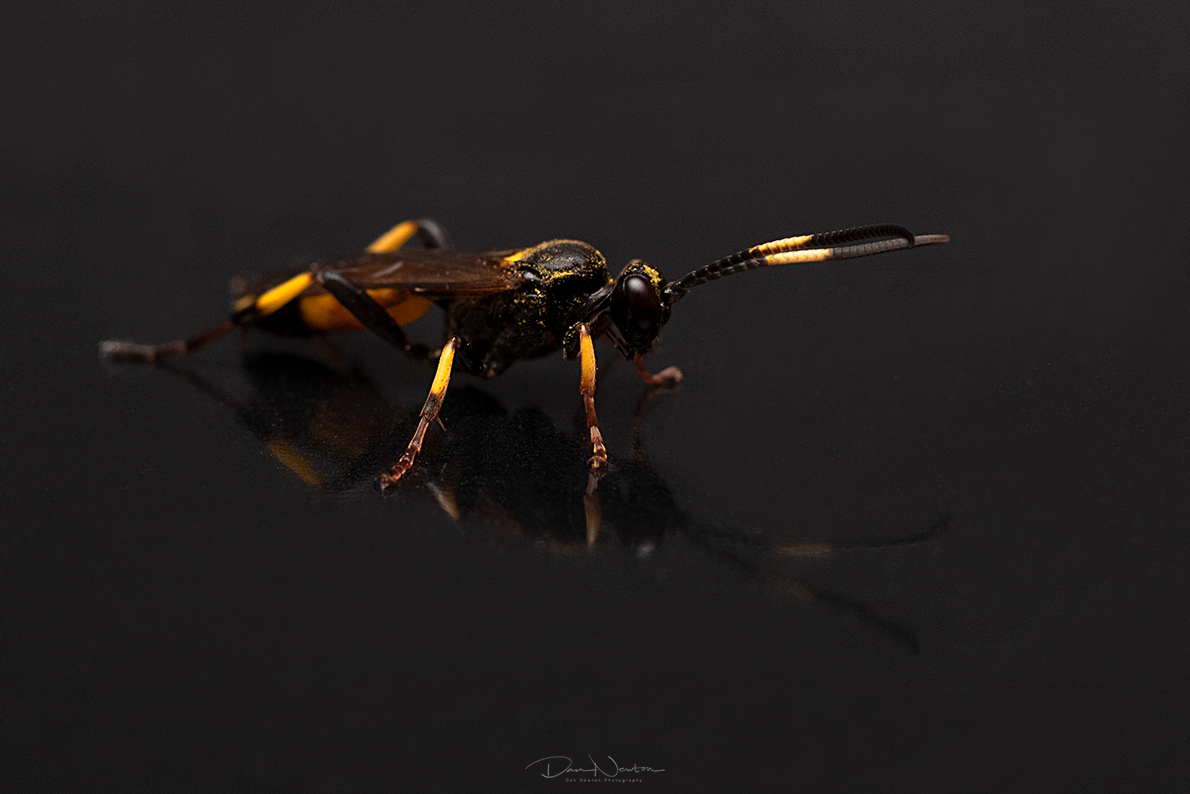 Parasitic Wasp - *Ichneumon stramentor* And then we move onto some more parasitic wasps. These Ichnuemon wasps take it a step further than the previous Ruby-tailed Wasp. The female Ichneumon Wasp will actively search for a particular species of caterpillar and then lay an egg directly inside it. Once the Caterpillar has eaten its fill, it will turn into a pupa. This is a hard shell which protects the caterpillar while the change to an adult moth takes place. However, if the caterpillar has a wasp egg laid into it, then at the end an Adult Wasp will emerge (not the Adult Moth as expected). This may sound 'gruesome' and 'unfair' but once again we are projecting our human emotions. >"Life.. Uh.. finds a way!" - Ian Malcolm from the Jurassic Park film All the wasp is doing is finding a way to survive and continue its genes, just like every other species on this planet. On that note I will finish this instalment. Hopefully you can begin to appreciate these under-valued a little bit more. You don't have to like them, but perhaps we could treat them with a bit more respect...? Hopefully you can see that this is a project that I am really interested in. As usual if you have any comments or questions then please write them below Next week I will conclude this series with the 'Other' species I have recorded. This will include all the various animals that don't fit into these main categories, but aren't numerous enough to be worth categorising separately. --- All names confirmed and checked via [Wikispieces](https://species.wikimedia.org/wiki/Main_Page) <center></center> <center>Thank you for reading, I hope you found it interesting. <br> If you have any thoughts or opinions on this article then I'd love to see your comments. And if you really like the content then maybe you would like to upvote or re-hive it.</center> <center></center> <center>All Photos taken by @dannewton unless otherwise stated. Check out my [website](https://dannewtonphotography.myportfolio.com/) for more of my work.</center> [Facebook](https://www.facebook.com/dannewtonphotography) - [Instagram](https://www.instagram.com/dannewtonphoto/) - [500px](https://500px.com/p/dan_newton?view=photos) - [Redbubble](https://www.redbubble.com/people/dan-newton/shop?asc=u) <center></center>
👍 laissez-faire, teamuksupport, statsexpert, sharpshot, polish.hive, pkocjan, engrave, daveks, artonmysleeve, slobberchops, adalger, ultratrain, mys, fbslo, mmmmkkkk311, ralph-rennoldson, bluesniper, oks2crypto, kph, emotionalsea, bil.prag, blacklux, qurator, keuudeip, oleg326756, yadamaniart, valth, erikaflynn, scrooger, lourdeshd6, gingerninja, pearica, jayna, followforupvotes, imdazu, onethousandwords, sdibot, make-a-whale, niallon11, shawkr13, jlsplatts, feedyourminnows, angelro, che-shyr, vintherinvest, chekohler, qustodian, straykat, pab.ink, soufiani, gribouille, upfundme, qtip, qberry, qurator-tier-0, hatoto, leonnolan24, blewitt, minimining, steemitmamas, mariluna, azli13, ambifokus, deeanndmathews, tinyhousecryptos, mowemu, bella.bear, delilhavores, rufoodingkidding, sneakyfreak, sneakysneak, creepycrawly, creepycrawler, crawlingterror, andreina57, creepypastaz, poodlenoodle, minibets, minib1, ghastlygames, maitt87, joseq1570, buzzzz, chittysity, alexrohr, diana8, espoem, metzli, khimgoh, crowbarmama, frejafri, urtrailer, saboin, actisam, ambyr00, majes.tytyty, dronegraphica, leighscotford, kiemis, dizzyjay, nikema, dappstats, cryptogambit, czera, juanvegetarian, ninnu, theleapingkoala, godlovermel25, verhp11, ntowl, rachelleignacio, jacuzzi, mumma-monza, rmach, mrultracheese, longer, happycrazycon, andyjim, melooo182, coquiunlimited, carn, foxyspirit, sandymeyer, ohicklin, guchtere, marcoriccardi, bdkabbo, vincy, danieli98, nolasco, nwjordan, indayclara, robmojo, toofasteddie, alimamasstory, payroll, varunpinto, neilru75, ksteem, hive-183841, faltermann, darrenflinders, ocd-witness, ocd, steempress, detlev, ma1neevent, kingkinslow, dante31, howo, mikepm74, therealwolf, critic-on, hanggggbeeee, sankysanket18, tomatom, lerma, sizandyola, miroslavrc, indigoocean, coarebabes, ocdb, pushpedal, agent14, squareonefarms, mengene, poshbot, libbi, spirall, usainvote, fiveboringgames, diosarich, eonwarped, gatolector, roelandp, matt-a, saleg25, roomservice, redrica, postpromoter, smartsteem, mikitaly, rpcaceres, variedades, hiveonboard, bestofreddit, kevinbacon, forester-joe, tombstone, epicdice, zoeanavid, phillarecette, arcange, fengchao, ocd-accountant, mazima, gabrielatravels, iameden, titianus, raphaelle, steemitboard, blocktrades, investegg, idkpdx, beerlover, mammasitta, wandergirl, yiobri, borjan,